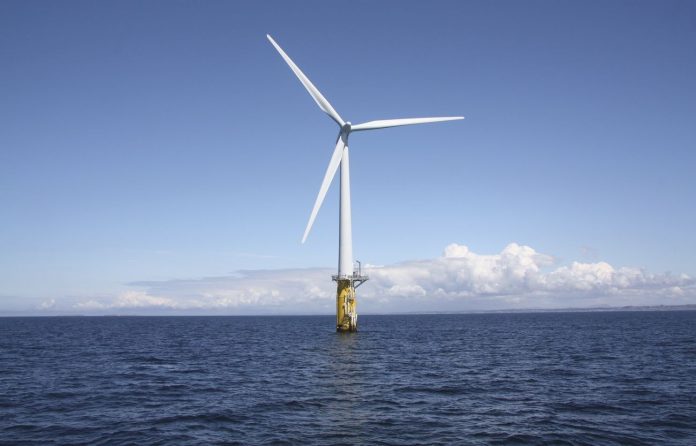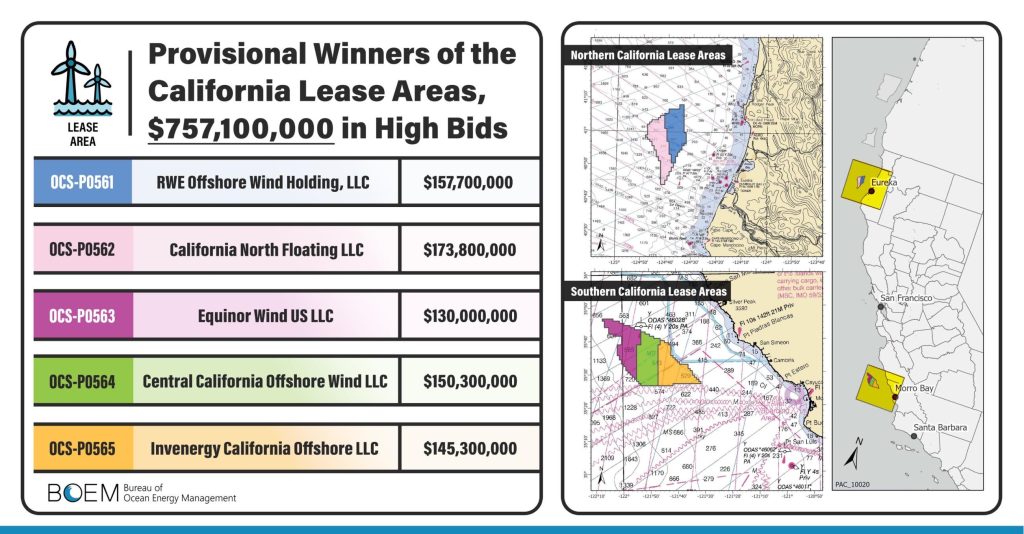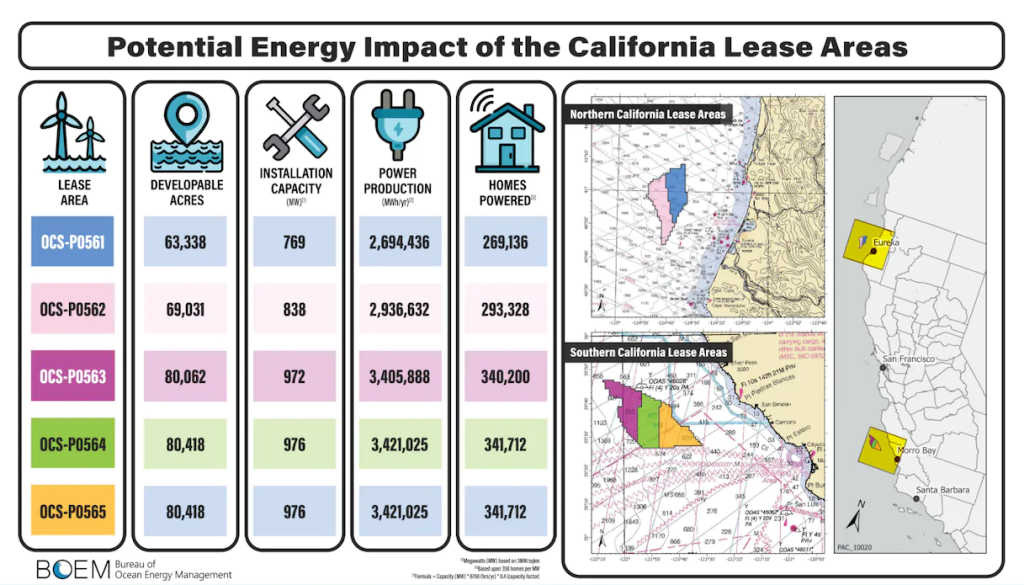
Floating offshore wind energy platforms are coming to California, as the Bureau of Ocean Energy Management (BOEM) has concluded its first sale of leases permitting the installation of platforms on the outer continental shelf. Five companies picked up leases, each between $130 million and $173 million, to install turbines in groups west of Eureka and Morro Bay, California.
While these initial sales do not extend outside of California, they are precursors for the potential of wind energy off the Washington coast. Floating offshore platforms are a new technology that has found footing in Europe and Asia, but until now not the United States. Northwest seaports stand to benefit from growth in the technology as the region has expertise in the industry and port capacity to service the sector.

The Biden-Harris administration announced the sale as part of a goal to install 30 gigawatts of offshore wind energy capacity by 2030. BOEM estimated the electricity produced by these sites could power a million and a half homes. Initial statements from the purchasing companies suggest the final installations could double that mark.
California’s position at the front of the line for West Coast wind farm development comes from the state’s attempt to aggressively wean itself from fossil fuels. The large population and recognized pollution issues have made California a leader in vehicle efficiency and solar energy development. In 2021, the state legislature ordered up a strategic plan for offshore wind by 2023, and looks to be setting some audacious goals.
The same pressure has not appeared in the Pacific Northwest due to the prevalence of hydroelectric power in Oregon (46% of the state’s energy production) and Washington (65%). But offshore wind will be coming north.
For Puget Sound ports, the California offshore wind leases “put into motion efforts to develop new clean energy sources that will help industries transition away from fossil fuels.” Northwest Seaport Alliance co-chairs Ryan Calkins and Don Meyer said when contacted via email. “As leaders in West Coast transmodal transportation and one of the world’s top hubs for maritime innovation and workforce, Puget Sound ports and local maritime industrial businesses would be natural partners to support California offshore wind with logistics, maintenance, and other services.”

Commissioner Calkins was bullish on the opportunities of offshore wind when he appeared on The Urbanist Podcast in November. In Washington, “we have a mature inland wind and inland solar industry,” he said. “I anticipate by the end of this decade we’ll have a handful of turbines off the Pacific coast of the United States. It will be cheaper than any form of fossil fuel before you know it.”
Puget Sound has an inherent ability to capitalize on this market, and Calkins points to the region’s specialty vessel designers, the large boat yards on a calm fjord, and the employee expertise in shipping and aerospace as attractions for the industry: “It would be my dream to point to a robust offshore wind industry in Seattle in ten years and say I was here at the outset.”
Ray Dubicki is a stay-at-home dad and parent-on-call for taking care of general school and neighborhood tasks around Ballard. This lets him see how urbanism works (or doesn’t) during the hours most people are locked in their office. He is an attorney and urbanist by training, with soup-to-nuts planning experience from code enforcement to university development to writing zoning ordinances. He enjoys using PowerPoint, but only because it’s no longer a weekly obligation.

